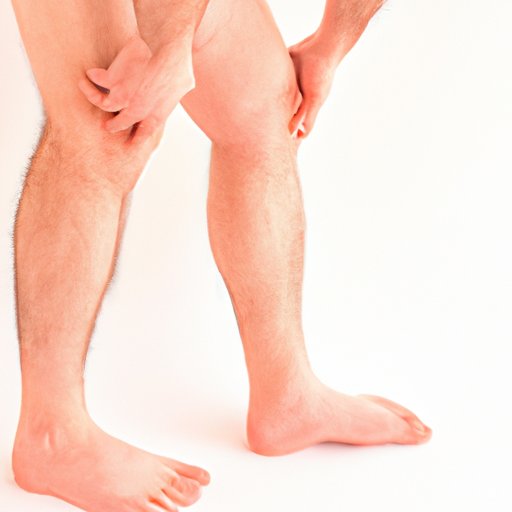
Introduction
Leg swelling, also known as edema, is a common problem that can be caused by a variety of factors, such as poor circulation, a sedentary lifestyle, or a medical condition. Swollen legs can make it difficult to move around and perform daily activities, and can also be a source of discomfort and pain. Fortunately, there are many ways to reduce swelling in legs, from natural remedies and lifestyle changes to medical treatments and diet modifications. In this article, we will explore some of the most effective strategies for combating leg swelling and improving overall mobility and wellbeing.
Natural Remedies for Reducing Leg Swelling
One way to reduce swelling in legs is through natural remedies, which can help to improve circulation, reduce inflammation, and alleviate pain. Here are some of the most popular natural remedies:
Epsom salt baths
Epsom salt contains magnesium, which can help to relax muscles and promote blood flow. Taking a warm bath with Epsom salt can help to reduce swelling and ease soreness in the legs. Add 2 cups of Epsom salt to warm bath water and soak for at least 20 minutes.
Massage
Massaging your legs can help to stimulate circulation and reduce inflammation. Use a gentle, circular motion to massage your legs, working your way from your feet to your thighs. You can also use a foam roller to massage your legs or try a professional massage.
Ginger or turmeric supplements
Ginger and turmeric are natural anti-inflammatories that can help to reduce swelling in the legs. You can take these supplements in capsule form or add fresh ginger or turmeric to your meals for an added boost of inflammation-fighting power.
Lifestyle Changes to Reduce Leg Swelling
In addition to natural remedies, making some lifestyle changes can also help to improve circulation and reduce swelling in the legs. Here are some lifestyle changes to consider:
Exercise
Regular exercise can help to improve circulation and prevent fluid from pooling in the legs. Aim for at least 30 minutes of moderate exercise, such as walking, cycling, or swimming, on most days of the week.
Avoiding salt
Consuming too much salt can lead to water retention and swelling in the legs. Try to limit your salt intake to no more than 2,300 milligrams per day, or less if you have high blood pressure or other health concerns.
Keeping legs elevated
Elevating your legs above your heart can help to reduce swelling and improve circulation. Try to elevate your legs for at least 30 minutes a day, either by lying down with your legs propped up on pillows or by using a footstool when sitting.
Medical Treatments for Chronic or Severe Leg Swelling
If lifestyle changes and natural remedies aren’t enough to reduce your leg swelling, you may need to consider medical treatments. Here are some options:
Medications such as diuretics
Diuretics are medications that can help to flush excess fluid from the body. They can be taken orally or through an IV and are often used to treat severe or chronic leg swelling.
Compression stockings
Compression stockings apply pressure to the legs, which can help to improve circulation and reduce swelling. They come in a variety of sizes and pressures, so it’s important to speak with your doctor to determine which type is best for you.
Surgery in extreme cases
In rare cases, surgery may be necessary to treat chronic or severe leg swelling. Surgical options include procedures to remove damaged tissue or blockages in the lymphatic system.
Diet Changes to Reduce Inflammation
It’s also important to consider your diet when trying to reduce leg swelling. Here are some dietary changes to consider:
Avoiding processed foods
Processed foods are often high in salt, sugar, and other additives that can contribute to inflammation and fluid retention. Try to eat whole, unprocessed foods whenever possible.
Limiting alcohol
Alcohol can contribute to dehydration and inflammation, which can worsen leg swelling. Try to limit your alcohol intake to no more than one drink per day for women and two drinks per day for men.
Cutting back on sugar
Sugar can contribute to inflammation and fluid retention in the body. Try to limit your sugar intake to no more than 25 grams per day for women and 36 grams per day for men.
At-Home Exercises to Improve Circulation
Finally, there are some exercises you can do at home to improve circulation and reduce leg swelling. Here are a few to try:
Ankle circles
Sit with your legs extended in front of you and point your toes. Rotate your ankles clockwise for 10-15 counts, then switch to counterclockwise.
Calf raises
Stand with your feet shoulder-width apart and rise up onto your toes, then lower down. Repeat for 10-15 reps.
Seated leg lifts
Sit in a chair and lift one leg at a time, keeping it straight and holding for a few seconds before lowering down. Repeat for 10-15 reps on each leg.
Conclusion
Reducing leg swelling can be a challenge, but with the right approach, it’s possible to improve circulation, reduce inflammation, and alleviate pain. Try different remedies and lifestyle changes to find what works best for you, and don’t be afraid to seek medical advice if your swelling is chronic or severe. With persistence and a positive attitude, you can overcome leg swelling and enjoy greater mobility and wellbeing.




